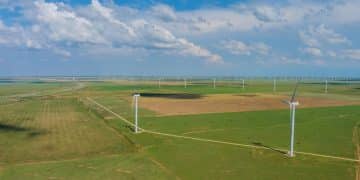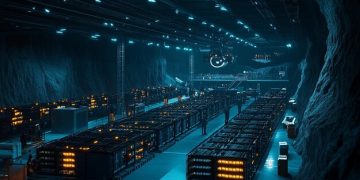Infrastructure Bill’s Impact on US Construction Businesses Unveiled
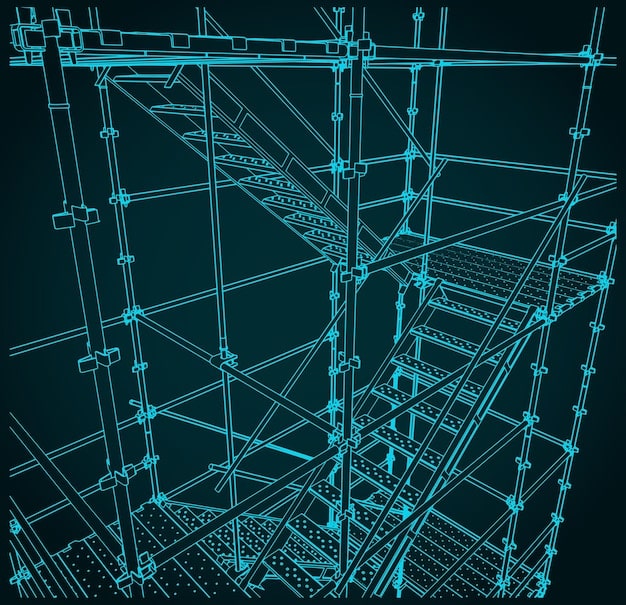
The Infrastructure Investment and Jobs Act is profoundly reshaping the landscape for US construction businesses, presenting both unprecedented opportunities for growth and significant operational challenges that demand strategic adaptation and foresight.
The Infrastructure Investment and Jobs Act (IIJA), often referred to simply as the Infrastructure Bill impacting US construction businesses, signals a pivotal moment for the industry. This monumental legislation promises to inject trillions into renovating and expanding America’s foundational structures, from highways and bridges to broadband and clean energy projects. For construction firms across the nation, understanding the nuances of this bill is not just beneficial—it’s essential for navigating the evolving economic landscape and seizing emerging opportunities.
The foundations of the Infrastructure Investment and Jobs Act
The Infrastructure Investment and Jobs Act (IIJA), signed into law in November 2021, represents a landmark bipartisan effort to modernize America’s infrastructure. This legislation isn’t merely about patching potholes; it’s a comprehensive package designed to stimulate economic growth, enhance competitiveness, and create millions of jobs. Its reach extends across various sectors, ensuring a wide-ranging impact on the construction industry.
At its core, the IIJA allocates approximately $1.2 trillion over ten years, with a substantial portion dedicated to new federal spending on infrastructure projects. This funding targets critical areas that have long been underfunded, addressing decades of neglect and laying the groundwork for a more robust and resilient future for the United States.
Key funding allocations
The bill’s financial commitments are vast and diverse, signifying a strategic approach to nationwide improvements. Each allocation is designed to address specific needs within the nation’s infrastructure, promising a ripple effect across the construction sector.
- Transportation: Over $550 billion is earmarked for roads, bridges, public transit, and passenger rail, making it the largest investment in surface transportation in decades.
- Utilities: Significant funds are allocated for improving water pipes, removing lead service lines, expanding broadband internet access, and upgrading the electric grid.
- Environmental Initiatives: Investments in addressing climate change resilience, cleaning up superfund sites, and promoting clean energy projects are also central to the bill’s objectives.
These investments represent a significant departure from previous federal spending patterns, indicating a renewed national commitment to infrastructure. For construction businesses, this translates directly into a pipeline of projects that will shape their operations for years to come. Understanding these allocations is the first step in positioning a firm for success.
The implementation of these funds will span several years, providing a sustained level of activity for the construction industry. This predictability allows companies to plan for future growth, invest in new equipment, and expand their workforce with a degree of certainty not often seen in the sector. It’s a transformative period, promising a fundamental shift in how the US approaches its infrastructural needs.
Projected opportunities for construction businesses
The passage of the Infrastructure Investment and Jobs Act (IIJA) has opened up an unprecedented array of opportunities for construction businesses across the United States. This federal legislation is set to usher in a new era of infrastructure development, directly impacting the demand for construction services, materials, and skilled labor. Firms that strategically align their capabilities with the bill’s objectives stand to benefit significantly.
The sheer volume of projects anticipated under the IIJA means an increased workload for many companies. From large-scale highway expansions to intricate broadband network installations, diverse contracts will be available, catering to a wide range of specialties within the construction sector.
Enhanced demand across sectors
The bill is designed to touch nearly every facet of American infrastructure, which translates into heightened demand for construction activities in multiple areas. This broad scope creates opportunities for firms specializing in various types of infrastructure.
- Roads and Bridges: A primary focus, leading to a surge in projects for road paving, bridge repairs, and new bridge construction.
- Water Infrastructure: Significant work expected in replacing aging water mains, improving wastewater treatment facilities, and enhancing water quality.
- Broadband Expansion: The push for universal high-speed internet will require extensive trenching, conduit installation, and fiber optic laying.
- Power Grid Modernization: Upgrades to the electrical grid will involve new power lines, substation enhancements, and renewable energy infrastructure.
Beyond these direct construction opportunities, the bill also stimulates demand for related services. This includes engineering and design firms, material suppliers, equipment manufacturers, and logistics providers, creating a broader economic uplift for interconnected industries.
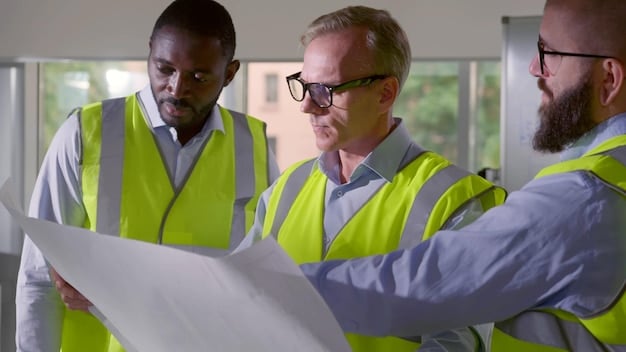
Job creation and workforce development
One of the stated goals of the IIJA is job creation. The influx of projects will necessitate a substantial increase in the construction workforce. This presents opportunities not only for existing skilled workers but also for new entrants into the trades.
Companies should anticipate a competitive labor market and consider proactive strategies for recruitment and retention. Investing in training programs, apprenticeships, and competitive compensation packages will be crucial for securing the workforce needed to execute these ambitious projects. The long-term nature of the bill’s funding also supports sustained career growth within the industry, making construction an attractive field for potential employees.
The bill’s emphasis on clean energy and advanced technologies may also spur demand for new skill sets, such as those related to sustainable construction practices, smart infrastructure, and digital project management tools. Forward-thinking firms will embrace these changes, adapting their training and operational models to meet future project requirements.
Furthermore, the long-term outlook provided by the IIJA allows construction businesses to make more confident investments in heavy machinery and technology. The certainty of a sustained project pipeline justifies capital expenditures that might otherwise be deemed too risky. This investment in modern equipment can enhance efficiency, reduce costs, and improve project delivery times, making firms more competitive in bidding for high-value contracts.
Challenges and strategic adaptations
While the Infrastructure Investment and Jobs Act (IIJA) presents boundless opportunities, it also ushers in a new set of challenges for US construction businesses. Navigating this evolving landscape effectively requires strategic foresight, adaptability, and a proactive approach to potential hurdles. Firms that acknowledge and prepare for these challenges will be better positioned to capitalize on the bill’s benefits.
The sheer scale of the upcoming projects, combined with existing industry constraints, demands careful planning. Ignoring these obstacles could lead to project delays, increased costs, and missed opportunities.
Labor shortages and talent retention
One of the most persistent challenges facing the construction industry, even before the IIJA, is the chronic shortage of skilled labor. The influx of new projects will undoubtedly exacerbate this issue, creating intense competition for qualified workers. This challenge requires innovative solutions.
- Recruitment: Businesses must aggressively pursue diversified recruitment strategies, including outreach to schools, veterans, and underrepresented groups.
- Training and Upskilling: Investing in internal training programs, apprenticeships, and certifications for new and existing employees is crucial to build capacity.
- Retention: Competitive wages, benefits, better working conditions, and clear career progression paths are essential to retain valuable talent.
Firms might also consider partnerships with educational institutions or trade schools to establish a pipeline of future talent. The long-term nature of the IIJA provides a strong incentive for individuals to enter the construction trades, as stable employment prospects are more assured.
Supply chain disruptions and material costs
The global supply chain has faced significant disruptions in recent years, leading to material shortages and price volatility. The increased demand for construction materials driven by the IIJA projects will likely intensify these pressures, affecting project timelines and budgets.
Companies need to implement robust supply chain management strategies. This includes diversifying suppliers, building stronger relationships with manufacturers, and potentially stockpiling critical materials when feasible. Long-term contracts with suppliers can also help lock in prices and ensure material availability.
Furthermore, innovative construction methods, such as modular construction or prefabrication, can help mitigate some material-related risks by reducing on-site waste and optimizing material usage. Embracing digital tools for inventory management and project planning can also improve efficiency in resource allocation.
In addition to these operational challenges, regulatory complexities can also present hurdles. Projects funded by the IIJA often come with specific compliance requirements, including environmental regulations, prevailing wage laws, and Buy America provisions. Staying abreast of these requirements and ensuring adherence is vital to avoid penalties and delays. Investing in compliance expertise or partnering with legal and regulatory consultants can be a wise strategic move for firms bidding on federal projects.
Technological advancements and innovation
The Infrastructure Investment and Jobs Act (IIJA) isn’t just about traditional construction; it’s a catalyst for accelerating technological adoption and innovation within the US construction industry. As projects become more complex and demand for efficiency rises, leveraging cutting-edge technologies will be paramount for firms seeking a competitive edge. This shift marks a significant evolution in how construction projects are conceived, managed, and executed.
The sheer scale and intricacy of modern infrastructure projects funded by the IIJA necessitate more sophisticated tools and approaches than ever before. Embracing these innovations is no longer optional but a critical component of successful project delivery.
Digital transformation in construction
Digital technologies are revolutionizing every stage of the construction lifecycle, from initial design to ongoing maintenance. The IIJA provides an impetus for more widespread adoption of these tools.
- Building Information Modeling (BIM): BIM allows for the creation of detailed 3D models that integrate various project aspects, improving collaboration, reducing errors, and enhancing project visualization.
- Digital Project Management Platforms: These platforms streamline communication, scheduling, budget tracking, and document management, leading to more efficient project execution.
- Data Analytics: Analyzing data from sensors, drones, and equipment can provide insights into project performance, identify potential issues, and optimize workflows.
The move towards a more digitally integrated workflow can lead to significant cost savings and improved safety records. Firms that invest in these technologies will find themselves better equipped to handle the demands of large-scale, complex infrastructure projects.
Robotics, automation, and AI
Beyond digital platforms, robotic technology, automation, and artificial intelligence are poised to transform construction tasks, addressing challenges such as labor shortages and safety concerns.
Automated equipment, from autonomous bulldozers to robotic welders, can perform repetitive or dangerous tasks with greater precision and speed. Drones are increasingly used for site mapping, progress monitoring, and safety inspections, providing real-time data and enhancing oversight.
Artificial intelligence, meanwhile, can optimize project scheduling, predict potential delays, and even assist in design processes by generating multiple design options based on specific parameters. These technologies not only boost productivity but also contribute to a safer working environment by removing human workers from hazardous situations.
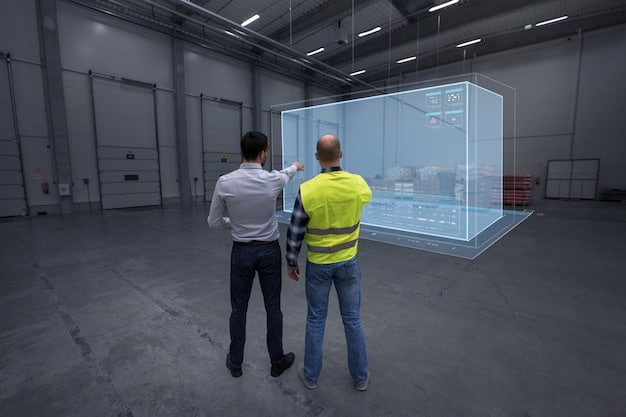
The strategic adoption of these technologies will require significant investment in training and infrastructure. However, the long-term benefits in terms of efficiency, safety, and competitiveness far outweigh the initial costs. Construction businesses that embrace this technological revolution will be at the forefront of the industry’s evolution, ready to tackle the challenges and opportunities presented by the IIJA.
Furthermore, the focus on sustainable infrastructure within the IIJA will drive innovation in green building materials and practices. Companies that research and adopt these new methods, such as utilizing recycled materials or optimizing energy efficiency in construction, will not only align with the bill’s objectives but also appeal to an increasing number of environmentally conscious clients. This dual benefit underscores the importance of staying current with all forms of industry innovation.
Financial implications and funding mechanisms
Understanding the financial implications and the various funding mechanisms of the Infrastructure Investment and Jobs Act (IIJA) is crucial for US construction businesses. The bill’s funding is disbursed through a complex web of existing federal programs, new initiatives, and grant opportunities, each with specific criteria and application processes. Firms need to carefully dissect these mechanisms to properly plan and secure their share of the opportunities.
The funding isn’t simply handed out; it flows through various channels, requiring businesses to be proactive in their pursuit of contracts. This financial landscape demands a sophisticated understanding of federal procurement and grant application processes.
Federal grants and contracting
A significant portion of IIJA funding is channeled through federal grants awarded to states, municipalities, and tribal governments. These entities then typically contract with private construction firms to execute the projects. Businesses must, therefore, forge strong relationships with local and state agencies.
- Grant Programs: Monitoring federal grant announcements and understanding their scope is vital. These grants often dictate the types of projects to be undertaken.
- Bid Processes: Familiarity with federal, state, and local government bidding procedures, including requirements for certifications and compliance, is non-negotiable.
- Pre-qualification: Many public agencies have pre-qualification processes for contractors, which firms should complete in advance to be eligible for future bids.
Furthermore, some direct federal contracts will be available, particularly for projects on federal lands or those managed by specific federal agencies. Firms with experience in federal contracting will have an advantage in these areas.
Financing and investment strategies
While the IIJA provides substantial public funding, it also aims to catalyze private investment. Construction firms may need to explore various financing strategies to undertake larger, more complex projects that might require significant upfront capital.
Traditional bank loans, lines of credit, and equipment financing will remain relevant. However, firms might also explore public-private partnerships (PPPs), where private entities contribute capital and expertise in exchange for revenue streams or concessions. The IIJA encourages such partnerships, particularly for projects that can generate their own revenue, such as toll roads or utility upgrades.
Understanding the eligibility requirements for various funding streams and being prepared with robust financial proposals will give construction businesses a distinct advantage in securing contracts under the IIJA. This proactive financial planning is as important as operational readiness.
Moreover, firms should consider the long-term financial stability offered by the IIJA. The multi-year commitment of funds allows for greater confidence in making investments in workforce training, technology upgrades, and infrastructure improvements within their own operations. This stability can also make it easier to attract and retain skilled labor, as employees see a clear future within the industry.
Navigating regulatory and compliance frameworks
For US construction businesses, the Infrastructure Investment and Jobs Act (IIJA) doesn’t just bring financial opportunities; it also introduces a complex landscape of regulatory and compliance frameworks. Projects funded by the IIJA are subject to stringent federal guidelines, which can differ significantly from state or local regulations. Successfully navigating these requirements is paramount to avoiding costly delays, penalties, and even disqualification from future bids.
Compliance is not merely a formality; it directly impacts project timelines, costs, and the overall reputation of a firm. A meticulous approach to regulatory adherence is essential for any company aspiring to partake in IIJA-funded initiatives.
Key compliance areas
The IIJA includes several critical compliance areas that construction firms must particularly focus on:
- “Buy America” Provisions: These regulations mandate that iron, steel, manufactured products, and construction materials used in federally funded infrastructure projects must be produced in the United States. Firms must rigorously verify the origin of all materials.
- Prevailing Wage Requirements (Davis-Bacon Act): Projects over a certain federal threshold require contractors to pay workers locally prevailing wages and fringe benefits, as determined by the Department of Labor. Accurate record-keeping and payroll management are crucial.
- Environmental Regulations: Projects must comply with federal environmental laws, including those related to environmental impact assessments, wetland protection, and endangered species.
- Workforce Diversity and Inclusion: Many federal contracts include requirements for diversity in hiring and subcontracting, promoting opportunities for small businesses, disadvantaged businesses, and local hires.
Understanding and implementing these provisions requires dedicated resources and attention. Ignorance of these regulations is not an excuse and can lead to severe consequences for a business.
Strategic compliance management
To effectively manage the regulatory burden, construction firms should adopt a proactive and systematic approach to compliance. This might involve:
Implementing robust internal compliance programs that include regular training for project managers, procurement teams, and HR personnel. This ensures that all relevant staff are aware of their responsibilities and the specific requirements for IIJA projects.
Utilizing specialized software or platforms designed to track procurement origins, labor hours, and environmental impact data. Technology can significantly streamline compliance efforts and reduce the risk of human error.
Engaging with legal counsel or consultants specializing in federal contracts and environmental law. Their expertise can provide invaluable guidance, especially for firms new to federal projects, helping them navigate complex legal language and requirements.
Firms that prioritize strong compliance frameworks will not only mitigate risks but also enhance their reputation as reliable and responsible contractors, making them more attractive for future government infrastructure projects. This commitment to transparency and adherence builds trust and secures long-term opportunities within the evolving landscape of federal infrastructure spending.
Long-term outlook and sustainable practices
The Infrastructure Investment and Jobs Act (IIJA) is not merely a short-term stimulus package; it sets a long-term trajectory for US infrastructure development, emphasizing resilience, sustainability, and technological integration. For construction businesses, this means thinking beyond immediate project gains and strategically planning for a future where sustainable practices and long-term asset management are integral to success.
The bill’s vision extends decades into the future, focusing on building infrastructure that can withstand climate change, support clean energy transitions, and adapt to evolving societal needs. This necessitates a shift in planning and execution for construction firms.
Embracing sustainable construction
Sustainability is a core tenet of the IIJA, with significant allocations for climate resilience, clean energy, and environmental remediation. Construction businesses must integrate sustainable practices into their operations to align with these goals and secure future contracts.
- Green Materials: Prioritizing the use of recycled content, locally sourced materials, and materials with a lower carbon footprint.
- Energy Efficiency: Implementing energy-efficient construction methods and designing infrastructure that minimizes operational energy consumption.
- Waste Reduction: Adopting practices that minimize construction waste, enhance recycling, and promote circular economy principles on job sites.
- Resilient Design: Constructing infrastructure that can better withstand extreme weather events, sea-level rise, and other climate-related impacts.
Firms that develop expertise in sustainable construction techniques and green building certifications will gain a significant competitive advantage. This includes investing in training for employees on new methods and materials, as well as updating equipment to support environmentally conscious practices.
Adaptation to evolving infrastructure needs
Beyond current projects, construction businesses must consider how America’s infrastructure needs will continue to evolve. The IIJA is the beginning of a sustained national investment, and future expansions will likely focus on smart infrastructure, renewable energy grids, and advanced transportation systems.
This long-term outlook encourages firms to invest in research and development, exploring emerging technologies like smart sensors for predictive maintenance, advanced materials for extended durability, and digital twins for entire infrastructure systems. Building capabilities in these areas now will position companies at the forefront of future industry trends.
Furthermore, adapting business models to support public-private partnerships (PPPs) will become increasingly vital. As federal funding evolves, the capacity to collaborate with private capital and expertise will be a hallmark of successful construction firms. This involves understanding complex contractual agreements, risk-sharing models, and long-term operational responsibilities.
Ultimately, the IIJA is shaping a more robust, sustainable, and technologically advanced future for US infrastructure. Construction businesses that embrace this long-term vision, invest in sustainable practices, and adapt to emerging needs will not only thrive but also play a crucial role in building the nation’s next-generation infrastructure, leaving a lasting legacy of innovation and resilience.
| Key Area | Brief Description |
|---|---|
| 🏗️ Infrastructure Investment | The Infrastructure Bill commits over $1.2 trillion for roads, bridges, transit, water systems, and broadband. |
| 📈 Growth Opportunities | Anticipated surge in demand for construction services, materials, and skilled labor across various sectors. |
| ⚠️ Challenges & Risks | Labor shortages, supply chain disruptions, material cost volatility, and complex regulatory compliance. |
| 💡 Future-Proofing | Emphasis on sustainable practices, technological integration (BIM, AI), and resilient project design. |
Frequently asked questions
▼
The primary aim of the IIJA is to modernize and upgrade America’s aging infrastructure, including roads, bridges, public transit, water pipes, broadband internet, and the electric grid. It aims to stimulate economic growth, create jobs, and enhance the nation’s global competitiveness by investing significantly in foundational public works.
▼
The IIJA is expected to significantly heighten the demand for skilled and unskilled labor in the construction sector. This will likely exacerbate existing labor shortages, prompting businesses to invest more in recruitment, training programs, apprenticeships, and competitive compensation packages to attract and retain a sufficient workforce for upcoming projects.
▼
Financial opportunities primarily stem from increased federal grants to states and municipalities, leading to a surge in public works contracts. Businesses can also benefit from direct federal contracts and explore public-private partnerships. Understanding grant cycles, bid processes, and proactive financial planning are key to securing these opportunities.
▼
Firms may face challenges related to “Buy America” provisions, requiring US-made materials, and the Davis-Bacon Act, stipulating prevailing wages. Adhering to environmental regulations, diversity requirements, and strict reporting standards will also be crucial. Robust internal compliance programs and expert consultation are essential for navigating these complexities.
▼
The IIJA includes significant funding for climate resilience and clean energy initiatives, implicitly encouraging sustainable practices. This includes using green materials, adopting energy-efficient construction methods, reducing waste, and designing infrastructure that is resilient to climate change impacts. Firms incorporating these practices gain a competitive edge and align with future industry trends.
Conclusion
The Infrastructure Investment and Jobs Act represents a transformative epoch for US construction businesses, presenting a dynamic landscape of unparalleled opportunities intertwined with significant challenges. For firms to thrive, a comprehensive understanding of the bill’s myriad facets—from funding mechanisms and regulatory compliance to workforce development and technological adoption—is essential. Success will ultimately hinge on strategic adaptability, a commitment to innovation, and a proactive approach to operational and financial planning, ensuring not only immediate gains but also sustained growth within a modernized and resilient American infrastructure landscape.

